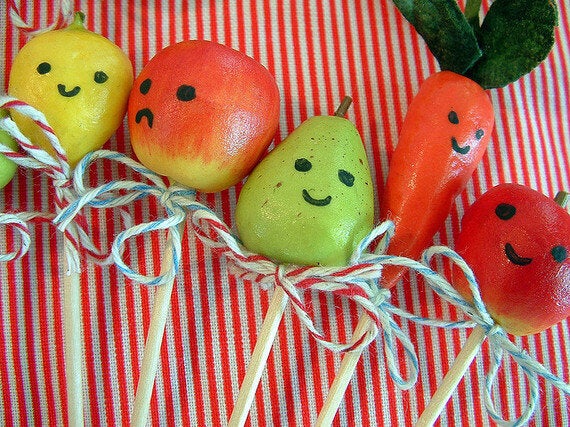
Children and vegetables. A life-long struggle. And one many of us know too well. In fact, I'm sure we all remember a Christmas dinner or two where we didn't want to eat those awful Brussel sprouts either.
But in an age of organic and eco-friendly produce, increased focus on sustainable living and environmental awareness there seems to be more need than ever to teach our kids the importance of eating healthily. Not only that, obesity in children is an ever increasing problem. The number of obese children has tripled in England over the last 25 years whilst worldwide; over 42 million children under the age of five were classed as overweight in 2013.
But why don't our children like their greens (...or reds or yellows, for that matter)?
An experiment by the University of Chicago and Northwestern University studied children aged three to five. The children listened to a story about a girl who ate a snack. The versions of the story varied; from how the snack tasted good and made her happy to how it made her feel healthy or how the snack helped her learn to read or count. They were then presented with the same snack and reported how appetising it was.
Kids found the snack less tasty when it had been presented as healthy in the story and they also ate less of the snack if the food served any goal - such as helping them learn to read which confirms the notion that snacks can't be both good and good for you.
And how can you encourage your child to eat vegetables?
Well, researchers from the UK, Denmark and France have found that the earlier you put veg on the table; the better. 332 children, between the ages of four months and 38 months were introduced to a new vegetable; an artichoke. After between five and ten meals, 75% of children under the age of two ate them whilst the older ones were more likely to reject them.
The most important tip is to practice what you preach. Encourage your child to eat vegetables by eating them too. If they see you eating them, they will be more likely to try them.
Where possible, don't make separate meals. It's difficult at first especially if they refuse to eat what you've put out in front of them. Persevere! If they don't eat it - they don't eat. They'll get hungry soon enough.
Generally speaking, avoid snacks before and after dinner (especially if they've not eaten). If they don't eat their main meal and you don't want your children to go hungry then put some raw veggies out on the table whilst you are preparing food or shortly after the meal has finished. Baby carrots, cherry tomatoes, sliced peppers, celery sticks are all ideal (although be aware of choking hazards for the very little ones!). Add in a few dips too - hummus, tzatziki or some salsa.
Whilst eating, don't reward them for eating their veggies. Reinforcement and over-praise can backfire and if they only eat to be praised it becomes a chore rather than a pleasure. In this case, when the praise stops - so does the eating.
In one experiment by Cornell University, researchers tested whether children would eat items named 'X-Ray Vision Carrots', 'Tiny Tasty Tree Tops' as opposed to that which was labelled 'Food of the Day'. The results found that 66% of carrots labelled 'X-Ray Vision Carrots' were eaten as opposed to 32% named 'Food of the Day'.
Susan Hart, Nottingham based nutrition coach agrees that creating a story with vegetables can encourage them to eat:
"Children love a story so at meal times I would suggest parents and children name the vegetables on a child's plate... Charlie the carrot, Beatrice the broccoli, Katie kale."
Gardening with your children may also increase their willingness to eat something which they have grown themselves. For those without the option of growing vegetables at home, consider a window box that can be used for carrots, salad leaves or beans.
Get your child involved in the process of buying and preparing food. Whilst shopping, let your child choose the fresh vegetables. When at home, let them wash and break up the greens, grate cheese and even cut the softer foods up (with supervision!).
And finally, never give up! Some research suggests that children need to try some new foods eight to ten times before they accept the taste so don't feel deflated if it doesn't happen straight away. We have a great opportunity in supporting our children to form healthy eating habits and to make healthy life choices. Learning to eat vegetables is only one of the small ways we can begin this journey and discover a lifetime of health.
For more ways on encouraging your child to eat vegetables, please visit my blog here.